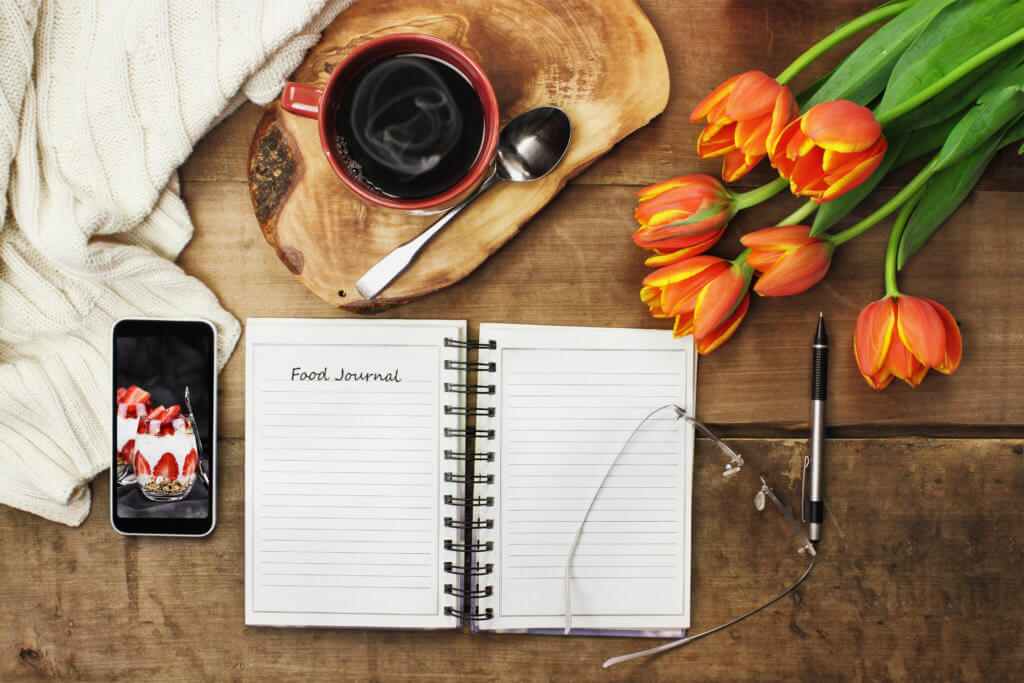The Ageless Weight-Loss Method That Actually Works
It can be easy to gravitate to the latest weight loss trends that are promoted endlessly on social media, magazines, and television. But what if while we were so focused on the newest trends, we forgot about an old-school tool that actually works?
Using a food diary has been around for decades and has continued to stand the test of time, and for good reason.
Why they work

Tracking your food intake gives you additional insight into what you are truly consuming and the actual calorie and macro count of each item. Keeping a food diary also reminds us that the calories from mindless snacking actually counts. Research shows that we continuously underestimate the calories we are consuming and overestimate the physical activity we do, which can lead to overeating and weight gain.
Although food journaling seems like a good idea, tracking every snack, meal and drink can sound exhausting. But new research shows you do not need to spend the better part of your day tracking to achieve optimal results. Published in the journal Obesity, the 2019 study found that the most successful participants – those who lost 10 percent of their body weight – spent, on average, 14.6 minutes a day on self-monitoring. The study engaged the participants in an online group session led by a dietitian and had them self-track their food intake.
This research used both education and self-monitoring to help people develop an awareness of their habits and then use what they learned to create long-lasting behavior changes.
As well as tracking your food intake, taking note of your mood and how it relates to what you are eating can also be revealing. Write down how you feel before and after eating. You can also add details about the environment you are eating in and your dining company to see how your choices and feelings may be impacted.
Should you keep a food journal?

Although food journals have been around for awhile, there are many ways to apply this concept to the modern age. So if you do not want to keep a physical journal, there are many apps that allow you to log your food, water, and exercise intake effortlessly. On top of showing you what is not working (those office sweets, maybe?), it can also show you what is working (when you choose a healthy dinner over takeout).
If you are going to start logging your food, it may be beneficial to stop categorizing food as good or bad, and instead, use your log as data you can use to inform your decisions.
For example, substitute, “I had a doughnut for breakfast, why did I do that?” for, “Ok, so I had a doughnut, which almost entirely contains empty calories from sugar. But now, I can balance that out by eating a lunch that has a good variety of vegetables and protein to stabilize my blood sugar.”
There are many benefits to using a food journal, but they are not for everyone. If you recognize yourself as someone who may find tracking what you eat can trigger an obsessive mindset or bring back memories of a past eating disorder or disordered eating behaviors, food tracking may not be the healthiest option. If this is the case, your best option may be working with a professional dietitian to identify other, healthy ways of reaching your goals.
How to use a food journal

Regardless of the method you use to track your food, the most important aspect to guarantee your success is making sure you incorporate it in your everyday routine.
On top of convenient apps or the physicality of a journal and pen, even a notes section on your phone or a Google doc will do the trick. Find what works for you.
As far as recording, many people find recording what they eat right after or before they eat it works best. Others find recording at the end of the day will work for them. As long as you remain consistent, a food journal will work.
Whatever your tracking method of choice, make sure it is realistic, healthy, and works with, not against your lifestyle.
Make tracking your food easy, head to your local club to pick up delicious, never-been-frozen grab-and-go meals.
